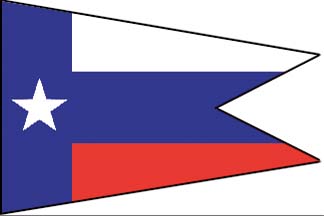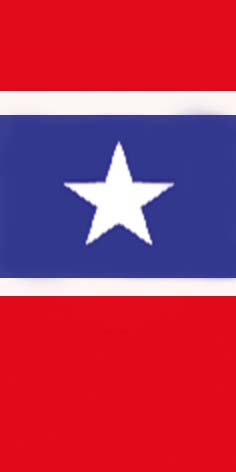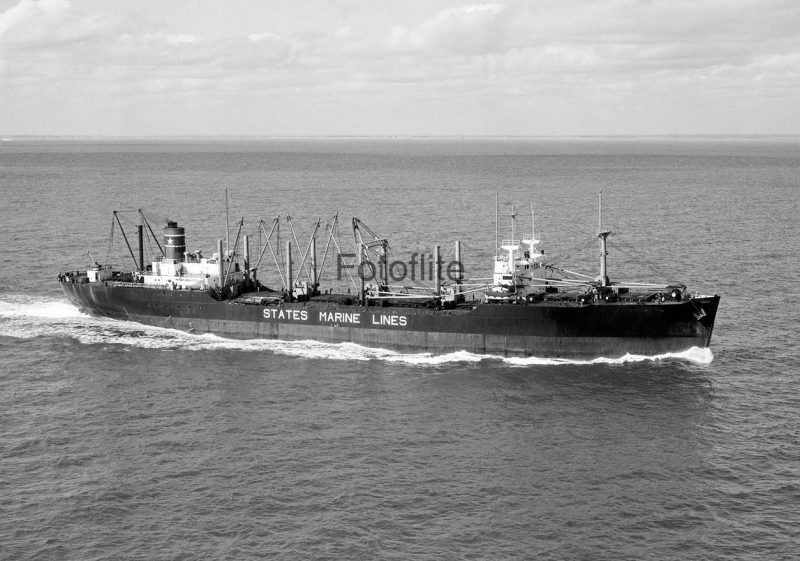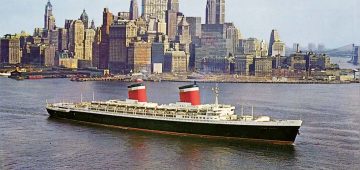The Second Largest American Shipping Line

 States Marine Corporation was founded in New York by Henry D. Mercer in 1930, and began by chartering foreign flag vessels in the tramp trades, and then developed liner services in post-war years using a large collection of war surplus standard ‘Liberty’, ‘Victory’, ‘C2’, ‘C3’ and ‘C4’ types. These were given the nicknames of American States e.g. Cotton State for Alabama, Old Dominion State for Virginia, Evergreen State for Washington etc. A full list of the 51 American States and their nicknames is given at the end of this article. The last of these ‘States’ steamers were sold at the end of 1973, but the subsidiary of Tankore Corporation continued with five ore/oil carriers, two of which were in service until the end of 1979.
States Marine Corporation was founded in New York by Henry D. Mercer in 1930, and began by chartering foreign flag vessels in the tramp trades, and then developed liner services in post-war years using a large collection of war surplus standard ‘Liberty’, ‘Victory’, ‘C2’, ‘C3’ and ‘C4’ types. These were given the nicknames of American States e.g. Cotton State for Alabama, Old Dominion State for Virginia, Evergreen State for Washington etc. A full list of the 51 American States and their nicknames is given at the end of this article. The last of these ‘States’ steamers were sold at the end of 1973, but the subsidiary of Tankore Corporation continued with five ore/oil carriers, two of which were in service until the end of 1979.
‘States’ Nomenclature
The Transatlantic passenger trade from the 1860s onward to around 1900 used some forty vessels with American ‘States’ nomenclature. State Line founded in 1873, Guion Line founded in 1866, National Line founded in 1864, and American Line founded in 1873 all confusingly used these names, with the confusion becoming so bad that State Line took the step of putting ‘State of’ as a prefix to the names of their steamers to differentiate them from the other three lines. Guion Line built their ‘States’ steamers at the Palmers yard in Jarrow and the John Elder yard on the Clyde, with Arizona 5,147/79 and Alaska 6,932/81 both capturing the Blue Riband of the Atlantic. They had accommodation for 140 in First Class, seventy in Intermediate Class, and one thousand in Steerage Class.


Conditions in Steerage Class had improved from the earlier long Transatlantic passages in wooden sailing ships. The appallingly crowded holds and lower decks previously had very little room and no privacy, with rough weather causing seasickness and passengers sick over each other, and no ventilation to take away the smell. Unhygienic conditions with cooking done on primitive stoves, and open air latrines on the weather deck above, caused dampness and disease e.g. cholera with the distinct possibility of passengers dying (and they frequently did) in transit. The ‘States’ vessel Washington of 1853 lost 94 passengers to cholera on one voyage, with a German migrant carrier losing one fifth of her passenger complement of 544 persons to the same disease.

Subscribe today to read the full article!
Simply click below to subscribe and not only read the full article instantly, but gain unparalleled access to the specialist magazine for shipping enthusiasts.





Comments
Sorry, comments are closed for this item